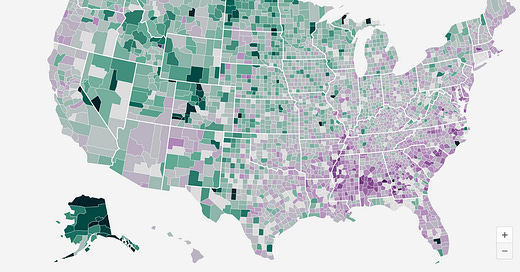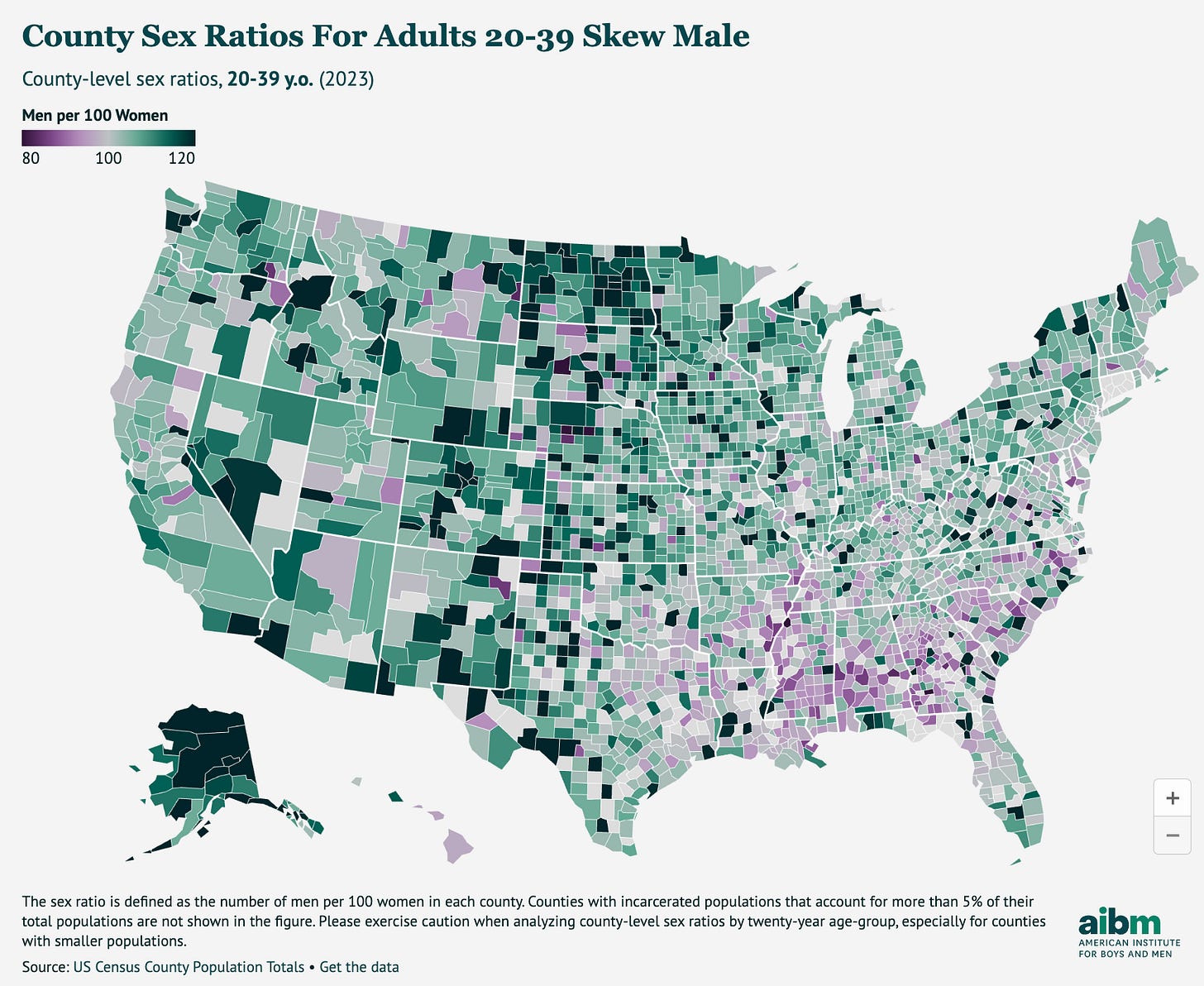Happy Valentine’s Day! Over at AIBM we’ve just published a research brief with the erotically-charged title “Patterns and Trends in County-Level Sex Ratios”. (Honestly, if that doesn’t get you in the mood, I don’t know what to say to you). The piece is authored by my AIBM colleagues Ravan Hawrami and Alanna Williams. Why should we care about sex ratios? Or more specifically what Joe Henrich rather brutally calls, in his book WEIRD, “the math problem of surplus men”?
There are few reasons. As Ravan and Alanna write:
Skewed sex ratios within communities have been linked by scholars to a wide range of social dynamics, including crime, mortality, relationship formation and bargaining power in the marriage market.
Given today’s date, one obvious question is the potential impact on relationships. It’s a blunt mathematical fact that for heterosexual, monogamous love to flourish, you need an pretty equal number of men and women. And yes, of course, there are many other kinds of love. But I’ll wager that HML (heterosexual, monogamous love, capitalized here to make is sound scholarly) will be around for many folks for a good while yet.
The brief shows a striking trend towards more male-skewed U.S. counties. Specifically:
In 43% of counties there are 105 or more men for every 100 women in the 20-39 year age bracket; compared to just 8% of counties which are skewed in the other direction (i.e. with 95 men or fewer for every 100 women). In some counties the skew is even more pronounced: in 20% of counties there are at least 110 men aged 20 to 39 for every 100 women in the same age group.
There is an even stronger skew towards men in the 20 to 39 year-old age range:
Most striking of all, I think, is the change over time. As the brief notes:
From 2003 to 2023, four out of five counties became relatively more male. More than a quarter (27%) increased their male shares by at least one percentage point (the equivalent to going from parity to 104 men per 100 women). As a result, the share of majority male counties doubled from 24% in 2003 to 48% in 2023. By contrast, just 3% of counties became majority female over the same time period.
The brief also show that it is more rural counties that are skewing male:
We’re at pains to say that much more research is needed to understand these trends and potential implications. We’ve made the data available, with county identifiers, in the hopes researchers will make use of it: I can imagine in being of interest to scholars working on health, politics, fertility, crime and much more.
But I think that a doubling in the share of majority-male counties in just two decades is a very big shift, and one we should be paying very close attention to. I think it’s likely more a symptom than cause of male problems, but quite a symptom nonetheless. Do read the whole brief here and share this!
ps. I’ve just appeared on Theo Von, in case that’s your thing. Fun!







I’ve lived mostly in male-dominated rural areas. It’s nothing sinister or related to women being too picky as at least one commenter suggests. It’s because of the jobs concentrated in those areas like oil fields, coal mines, logging, and military bases.
This is fascinating and begs so many follow ups:
1. Are there more women in southern counties because the Black men have been incarcerated?
2. Were the incarcerated counted, which would ramp up the male population of some counties? Similarly, what about military bases, which I bet also skew male?
3. As more men move to an area, do women flee it? Or is there a tipping point where X percentage of men causes women to flee it?
4. Are women fleeing adverse political counties for friendlier ones? Are men going from progressive counties to patriarchal ones?
5. Why in general are men moving to where they are? Is it jobs, such as fracking fields in ND? Or something else (I had a friend move to PA from NJ because of the more liberal gun laws, for example)?
6. Are changes in the composition of local industries (especially the loss of them) causing the changes in population?
As for Alaska, that ratio is the norm, I believe. As women who go there are told, The odds are good, but the goods are odd.